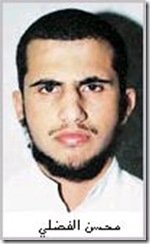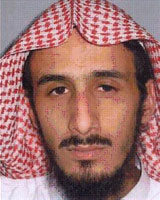The State Department released its Country Reports on Terrorism 2012 yesterday. The year 2012 witnessed a “marked resurgence of Iran’s state sponsorship of terrorism, through its Islamic Revolutionary Guard Corps-Qods Force (IRGC-QF), its Ministry of Intelligence and Security (MOIS), and Tehran’s ally Hezballah,” State concluded. “Iran and Hezbollah’s terrorist activity has reached a tempo unseen since the 1990s, with attacks plotted in Southeast Asia, Europe, and Africa.”
Several specific plots are cited in the report, including a July 2012 bombing in Bulgaria that killed six people (five Israelis and one Bulgarian) and injured more than 30 others. The Bulgarian government blames Hezbollah for the bombing.
The report highlights other plots and attacks in Cyprus, Georgia, India, Kenya, and Thailand as evidence of Iran’s worldwide campaign of terror in 2012.
In addition, the report reads, “both Iran and Hezbollah are providing a broad range of critical support to the Assad regime, as it continues its brutal crackdown against the Syrian people.” Iranian support for Assad’s forces has included “weapons, funds, and training to assist” in the “brutal crackdown that has resulted in the death of more than 70,000 civilians.”
Al Qaeda and Iran
With respect to Syria, there is an interesting twist in the State Department’s report. The al Qaeda network inside Iran, which operates as part of an agreement between al Qaeda and the Iranian regime, is sending fighters to Syria. It is not clear why Iran has allowed al Qaeda to facilitate these fighters’ travel to Syria, where al Qaeda’s Al Nusrah Front opposes the Assad regime, Iran, and Hezbollah.
“Iran remained unwilling to bring to justice senior al Qaeda (AQ) members it continued to detain, and refused to publicly identify those senior members in its custody,” the report reads. While some al Qaeda operatives are in detention, others are allowed to continue their work.

|
|
Muhsin al Fadhli, who is al Qaeda’s leader inside Iran. |
The report continues: “Iran allowed AQ facilitators Muhsin al Fadhli and Adel Radi Saqr al Wahabi al Harbi to operate a core facilitation pipeline through Iran, enabling AQ to move funds and fighters to South Asia and to Syria.”
“Al Fadhli is a veteran AQ operative who has been active for years,” State explains, and “began working with the Iran-based AQ facilitation network in 2009 and was later arrested by Iranian authorities.” Al Fadhli “was released in 2011 and assumed leadership of the Iran-based AQ facilitation network.”
Al Fadhli replaced an al Qaeda operative known as Yasin al Suri as the head of the Iran-based network. Al Suri was designated by the Treasury Department in July 2011 and the State Department issued a reward of $10 million for information leading to his capture in December 2011. [See LWJ reports, Treasury targets Iran’s ‘secret deal’ with al Qaeda and US offers $10 million reward for Iran-based al Qaeda financier.]
Then, in October 2012, the Treasury Department designated Adel Radi Saqr al Wahabi al Harbi, noting that he served as the deputy leader of the Iran-based network. In the same designation, Treasury reported that al Fadhli had assumed the leadership role. [See LWJ report, Treasury ‘further exposes’ Iran-al Qaeda relationship.]
Treasury said at the time that al Fadhli’s network provides “funding for al Qaeda activities in Afghanistan and Pakistan”, and moves “fighters and money through Turkey to support al Qaeda-affiliated elements in Syria.”
Thus, the State Department’s new report is at least the second time in less than one year that the Obama administration has said that al Qaeda’s Iran-based network aids the fight in Syria.
In Syria today, al Qaeda is increasingly at odds with Iran and Hezbollah. For example, the two sides have clashed in Qusayr, a city in western Syria near Homs. The fighting prompted a call by Mohammed al Zawahiri, the brother of al Qaeda emir Ayman al Zawahiri, and other Egyptian jihadists for attacks inside Shiite-led countries, including Iran. [See LWJ report, Egyptian jihadists call for attacks in Shiite countries.]
And, in April, Ayman al Zawahiri himself said that “the true faces of Iran and Hezbollah have been exposed, and their ugly reality has appeared in the field of holy war in Syria.”
It is not immediately obvious, therefore, why Iran would allow an al Qaeda network on Iranian soil to support al Qaeda’s efforts inside Syria. Iranian duplicity is a common feature of its dealings in the terrorist underworld, however.
In February 2012, for instance, the Treasury Department designated Iran’s Ministry of Intelligence and Security (MOIS) for supporting al Qaeda in Iraq, among other nefarious activities. The MOIS’s support includes providing “money and weapons to al Qaeda in Iraq (AQI),” as well as negotiating “prisoner releases of AQI operatives.” [See LWJ report, Treasury: Iranian intelligence supporting al Qaeda.]
The MOIS provided this support to AQI even though al Qaeda has indiscriminately slaughtered Shiites throughout Iraq. And the Iranians have provided crucial support to Shiite militias.
In Iraq, however, it is evident that al Qaeda and Iran have had common enemies, including the US military until late 2011. This is not the case today in Syria.
Iranian support for other groups
As in past years, the State Department’s report once again notes that the IRGC-Qods Force “trained Taliban elements on small unit tactics, small arms, explosives, and indirect fire weapons, such as mortars, artillery, and rockets.”
“Since 2006,” the report continues, “Iran has arranged arms shipments to select Taliban members, including small arms and associated ammunition, rocket propelled grenades, mortar rounds, 107mm rockets, and plastic explosives.” The same language has appeared in previous editions of the State Department’s report. [See LWJ report, State Department: Iran supports Taliban, Iraqi militants.]
Iran has also “shipped a large number of weapons to Kandahar, Afghanistan, aiming to increase its influence in this key province,” this year’s report notes.
Finally, the State Department has formally recognized the relationship between the Iranians and Shiite Houthi rebels in Yemen. For years, the Yemeni government has insisted that Iran is backing the Houthis, but US officials have regularly downplayed this allegation. Leaked State Department cables show that US officials continually pressed the Yemeni government for evidence regarding Iran’s collusion with the Houthis.
“Iran actively supported members of the Houthi tribe in northern Yemen, including activities intended to build military capabilities, which could pose a greater threat to security and stability in Yemen and the surrounding region,” the State Department reports. “In July 2012, the Yemeni Interior Ministry arrested members of an alleged Iranian spy ring, headed by a former member of the IRGC.”
The State Department’s report confirms, once again, that Iran sponsors terrorists and militants throughout the world.









3 Comments
“It is not immediately obvious, therefore, why Iran would allow an al Qaeda network on Iranian soil to support al Qaeda’s efforts inside Syria.”
Probably for many of the same reasons the US chose to ‘look the other way’ in respect to Foreign National’s seeking pilot training prior to 9 11 in the US. Besides in most ‘Theaters’ Iran & AQ & both of their surrogates happen to be operating in simultaneously they are not in full blown opposition to each other. The GAZA Strip is a good example of a convoluted environment, by ‘our’ standards, in which adversaries regularly cooperate & collaborate with each other.
The Sahara & adjoining ‘locales’ is another example of where ‘we’ find Shia & Sunni Islamist’s ‘occupying & collaborating’ in the same spatial environment. It would appear that our opponents & many of our allies & ‘acquaintances’ have a much grasp of Realpolitik than most of us in the USA do.
It seems that AQ and Iran have a common enemy in Turkey. It’s right here on LWJ: “Reports claim Al Nusrah Front members in Turkey were planning sarin gas attacks”
As one individual commented on that report, sarin isn’t easy for an insurgent group to manufacture. In light of the bombing in Reyhanli (and the leaked document from RedHack that implicates al Nusra in the attack) and reports that more VBIEDs have entered Turkey from Syria, it seems plausible that Iran is using AQ to destabilize Turkey.
It’s also interesting that the report on the AQ chemical weapons cell in Iraq surfaced at this time as well.
State Department highlights Iran’s ‘marked resurgence’ of state-sponsored terrorism. “We sternly reminded them of the red line in Syria.”